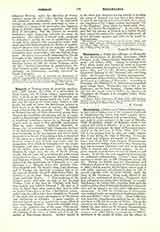

Neocaesarea, a titular see, suffragan of Hierapolis in the Patriarchate of Antioch, sometimes called Caesarea, as in “Georgii Cyprii Descriptio orbis romani” (ed. Gelzer, 1882). Among its bishops were Paul, whose hands were burned by order of Licinius and who attended the Council of Nicaea in 325 (Theodoret, “Hist. eccl.”, I, VII); Meletius, opposed to the Council of Ephesus in 431; Patricius (451) and John (553). In the sixth-century “Notitia episcopatuum” of Anastasius (Echos d’Orient, Paris, X, 145) this see is mentioned as a suffragan of Hierapolis. According to Procopius (De Aedificiis II, 9), Justinian accomplished great things there. Neocaesarea was a fort on the Euphrates, not far from Zeugma. Chabot thinks its site was the actual ruins of Balkiz (La frontière de l’Euphrate de Pompée a la conquète arabe, Paris, 1907, 278 sq.).
S. VAILHE

